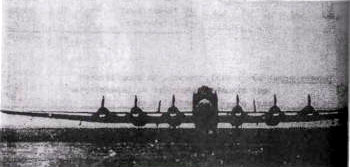Space-Centric Warfare, Part Three: The Moon and the Libration Points
Tuesday, June 24th, 2008Further out in space, the Americans held a considerable advantage: until the Zurich Treaty, they enjoyed a monopoly on the Earth’s only natural satellite. They also controlled L2 (the libration point behind the Moon), L1 (situated just in front of the Moon), as well as L5, at sixty degrees angle to the Moon. The Eurasians, by contrast, only controlled a single libration point, that of L4 (by virtue of the Russians having placed a “research station” there shortly after Olenkov came to power), and—in the wake of Zurich—a quarter of the Moon (though by 2110, the extent to which they had consolidated their foothold here was open to question).
Yet the actual significance of such dispositions was open to debate. Certainly the Americans had aggressively deployed resources to the Moon. Furthermore, in the years preceding Zurich, the hindmost libration point figured increasingly in their plans as the site of a reserve fleet that could cover their Lunar assets. But some prominent figures in the U.S. military (none of them in SpaceCom, it should be noted) argued that the Moon was a dangerous diversion. They pointed out that, since it took even the fastest spacecraft two days to cross from the Earth into the Moon’s orbit, any attention devoted to Earth Beyond was by definition a waste of resources. Even the utility of the Moon as a directed-energy weapons platform seemed problematic to such strategists: why put them there when you could simply deploy them closer to Earth?
This private stance aligned with the Eurasians’ public one. For, denied most of the key points in the Cislunar regions, Russia and China instead concentrated their efforts on areas closer to home—or so they claimed. While the ongoing war of words between the two superpowers lies beyond the scope of this inquiry, it is worth noting that the Eurasian rhetoric made much of the American near-monopoly on the Moon and nearby points. Even after Zurich, the press in Moscow and Beijing accused the United States of seeking to conquer the Solar System, or—with perhaps less hyperbole—of harnessing the resources of the Moon in order to dominate the Earth.
Yet, such rhetoric aside, there was much evidence to believe that, in reality, the Eurasian military viewed Cislunar space as crucial. And not just because of the resource issue. Helium-3 and off-Earth minerals were important, yes—but the really critical thing about Cislunar space was that it represented the high ground in the invisible topography of the Earth-Moon system. The amount of energy required to get material to the Cislunar was far greater than the amount of energy required to get material to Earth from the Cislunar. And the policy of Olenkov in this regard—to build up L4 as one of the greatest fortresses of all time—was thus matched by his successors: even post-Zurich, they studded their own slice of the Moon with bases. Yet what kind of combat might transpire on the Lunar surface—or among the libration points—remained unclear.
NEXT: NAVAL WARFARE




 You’re looking at the Junkers 390, a six-engined monstrosity capable of flying all the way to New York and then returning to Berlin for a round of schnapps. In fact, there are (admittedly unconfirmed) reports that this thing did exactly that in 1944 on a dry run, turning back even as its crew saw the lights of Manhattan emerging over the horizon. No prizes for guessing what kind of bombing run they were training for: by that point in the war, with the Reich collapsing around Hitler’s ears, there was really only one reason to try to hit New York, and that was with an atomic weapon. Fortunately, the German atomic program was way behind by that point, so it all came to naught.
You’re looking at the Junkers 390, a six-engined monstrosity capable of flying all the way to New York and then returning to Berlin for a round of schnapps. In fact, there are (admittedly unconfirmed) reports that this thing did exactly that in 1944 on a dry run, turning back even as its crew saw the lights of Manhattan emerging over the horizon. No prizes for guessing what kind of bombing run they were training for: by that point in the war, with the Reich collapsing around Hitler’s ears, there was really only one reason to try to hit New York, and that was with an atomic weapon. Fortunately, the German atomic program was way behind by that point, so it all came to naught.

